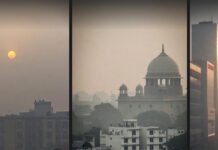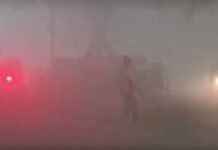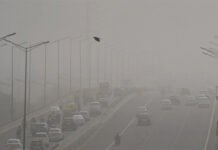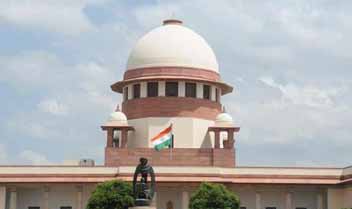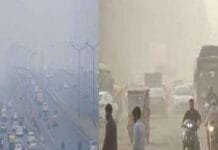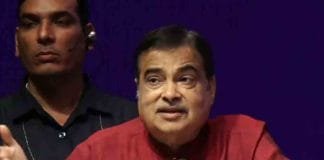New Delhi, October 20, 2025 — As India prepares to celebrate Diwali, the air quality in Delhi and the National Capital Region (NCR) has deteriorated to hazardous levels, raising serious health concerns for residents. The morning of October 20 saw the Air Quality Index (AQI) spike to 354, marking one of the highest pollution levels of the season.
Environmental experts attribute the spike to a combination of factors: the burning of agricultural stubble in neighboring states, vehicular emissions, industrial pollution, and the onset of firecracker-related activities in anticipation of Diwali.
“Pollution has reached a dangerous level, especially for children, the elderly, and those with respiratory or cardiac conditions,” said Dr. Meera Sharma, pulmonologist at AIIMS. “Even short-term exposure can cause coughing, throat irritation, and exacerbation of chronic illnesses.”
The Role of Firecrackers and Seasonal Factors
While stubble burning and vehicular emissions remain a consistent source of pollution, the approaching Diwali festival is expected to further aggravate the situation. Firecrackers release particulate matter, sulfur dioxide, and nitrogen oxides into the air, which can settle into fine particles (PM2.5) capable of penetrating deep into the lungs.
“Even a single day of heavy firecracker use can elevate AQI levels to over 500,” warned Anil Kumar, air quality analyst with the Centre for Science and Environment. “Given current levels, any Diwali-related spike will be extremely harmful.”
The combination of lower temperatures, calm winds, and high humidity this season is trapping pollutants close to the ground, creating a dense smog layer that limits visibility and increases health risks.
Impact on Daily Life and Health
Delhi residents are already reporting respiratory discomfort, eye irritation, and difficulty breathing. Hospitals have issued advisories for precautionary measures, particularly for vulnerable groups.
“I have asthma, and the air is already making it hard to breathe,” said Riya Mehta, a schoolteacher in South Delhi. “Wearing masks and using air purifiers is no longer optional — it’s a necessity.”
Authorities are urging citizens to limit outdoor activities, use N95 masks, and avoid burning firecrackers or leaves. Schools in several districts have announced shortened hours or remote classes for children sensitive to pollution.
Government Measures and Public Response
The Delhi Pollution Control Committee (DPCC) has increased monitoring and enforcement efforts, particularly in industrial clusters and areas prone to stubble-burning emissions. Temporary bans on certain types of fireworks have been reinforced, and drones are being used to monitor violations in real time.
“While the government is taking steps, public cooperation is crucial,” said Raghav Bahl, environment officer at DPCC. “Avoiding firecrackers, carpooling, and using public transport can make a significant difference.”
Despite these warnings, street markets are already buzzing with firecracker sales, and early evening celebrations in residential areas have begun, indicating that enforcement may face challenges.
Comparisons with Previous Years
Historically, Delhi’s air quality deteriorates sharply during the Diwali season. Last year, the AQI briefly touched 380, causing hospitals to report a 15% increase in respiratory cases. Experts believe this year could be worse due to persistent stubble burning in Punjab and Haryana, coupled with pre-Diwali festivities.
“Air quality management has improved slightly over the years, but seasonal spikes continue to be a problem,” said Dr. Seema Bansal, environmental scientist at Jawaharlal Nehru University. “Community awareness and strict enforcement remain key.”
International Perspective and Climate Concerns
Delhi’s pollution crisis is attracting global attention, as high particulate matter levels contribute to climate change and cross-border environmental issues. Studies show that prolonged exposure to Delhi’s smog can shorten life expectancy by up to 3-4 years in severely affected populations.
“The city’s pollution problem is not just a local issue — it has regional and global implications,” said Prof. Lars Henriksen, an air quality researcher from Denmark. “Mitigating stubble burning, transitioning to cleaner fuels, and promoting sustainable festivals are urgent priorities.”
Conclusion: A Diwali Under the Shadow of Smog
As Diwali lights begin to flicker across the capital, the festive glow is dimmed by a thick haze of pollution. While celebrations are a cornerstone of cultural tradition, this year, health experts and environmentalists urge restraint and responsibility.
“The true spirit of Diwali is celebration and family, not compromising health,” said Dr. Sharma. “If citizens take precautions, limit firecracker use, and support government efforts, it’s possible to have a joyful festival without endangering lives.”
For residents of Delhi-NCR, Diwali 2025 may be remembered not just for lamps and sweets, but as a call to action for cleaner air and sustainable festive practices.



